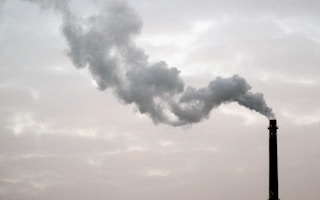At the beginning of every January, we all set unrealistic New Year’s resolutions. Companies do exactly the same. But, they set targets. Luckily, companies have a higher success rate in meeting their goals compared to the rest of us. Why? Because companies quantify them and numbers are often scrutinised or audited. Targets, even though they are often very frustrating, are important. Especially in the fight against climate change.
To continue reading, subscribe to Eco‑Business.
There's something for everyone. We offer a range of subscription plans.
- Access our stories and receive our Insights Weekly newsletter with the free EB Member plan.
- Unlock unlimited access to our content and archive with EB Circle.
- Publish your content with EB Premium.
A new report by the Science-Based Targets initiative (SBTi) shows that firms that set emissions reduction targets guided by science are cutting their emissions faster than expected. For the less climate-nerdy amongst us, SBTi is a non-profit that helps companies translate the Paris Agreement’s goal into concrete measures. SBTi defines and promotes best practice in science-based target setting, while independently assessing and approving companies’ targets in line with its strict criteria.
SBTi analysed 338 companies that had set targets guided by science. These targets require goals to be set not only decades out, but also measurable emission cuts in the short term. This is the first ever study to look at how setting science-based targets correlates with corporate emissions reductions and the extent to which companies are actually delivering on those targets.
The results are really promising. Target-setting companies have successfully reduced their emissions by 25 per cent since 2015, a difference of 302 million tonnes of CO2-equivalent. This is comparable to the annual emissions from 78 coal-fired power plants. Target-setters are most definitely ahead of schedule. A typical SBTi company is reducing annual emissions at a rate that exceeds the rate needed to limit warming to 1.5°C, according to pathways derived from climate scenarios.
The research also suggests that the planned emissions savings of companies with science-based targets are set to generate US$25.9 billion of new investment into climate mitigation initiatives in the next decade.
Hopefully these companies will soon evolve to trend setters!
What do we say?
Leveraging numbers to guide and shape sustainability goals is what Arabesque is all about. As part of our carbon metrics, we have developed an indicator that flags companies with a target compatible with a 2°C scenario. In particular, we distinguish between corporations that have just committed to, and those that have a target approved by SBTi.
Arabesque S-Ray data suggests a lot of work still needs to be done. As of 28 January, out of the 3,000 companies analysed, only 11 per cent have a SBTi approved target while just 6 per cent are committed. The results vary across regions. Europe leads the way with 14 per cent of companies approved and 9 per cent committed. Not very impressive numbers for pole position.
To add on this already rather dire picture, we looked at the Temperature Score of those companies with or committed to a SBTi target. As of 28 January, 25 per cent of them have a Temperature Score of 3°C, meaning that they are not disclosing sufficient information for us to compute a meaningful rating. Furthermore, 13 per cent of companies have a score of 2.7 °C or >2.7 °C, meaning they are not aligned with the Paris Agreement.
Definitely way too early to relax!
What does it mean?
For years, companies would announce plans to cut emissions using goals that appeared to be selected more because they were round numbers. Then SBTi arrived. Between 2015 and 2019, global emissions increased by an average of 0.85 per cent per year for energy and industrial processes, at the same time the typical SBTi company reduced its emissions by 6.4 per cent per year since setting its target. This is even bigger than the reduction required by the Paris Agreement where companies have to decrease their emissions at an annual rate of 4.2 percent on average.
At least one great thing happened in 2020. The rate of adoption of science-based climate commitments doubled versus 2015 to 2019.
But let’s not forget that the road ahead remains very steep and companies that are doing good remain the exception and not the rule.
Arabesque is a global group of financial technology companies offering sustainable investment, advisory, and data services through advanced ESG and AI capabilities.











